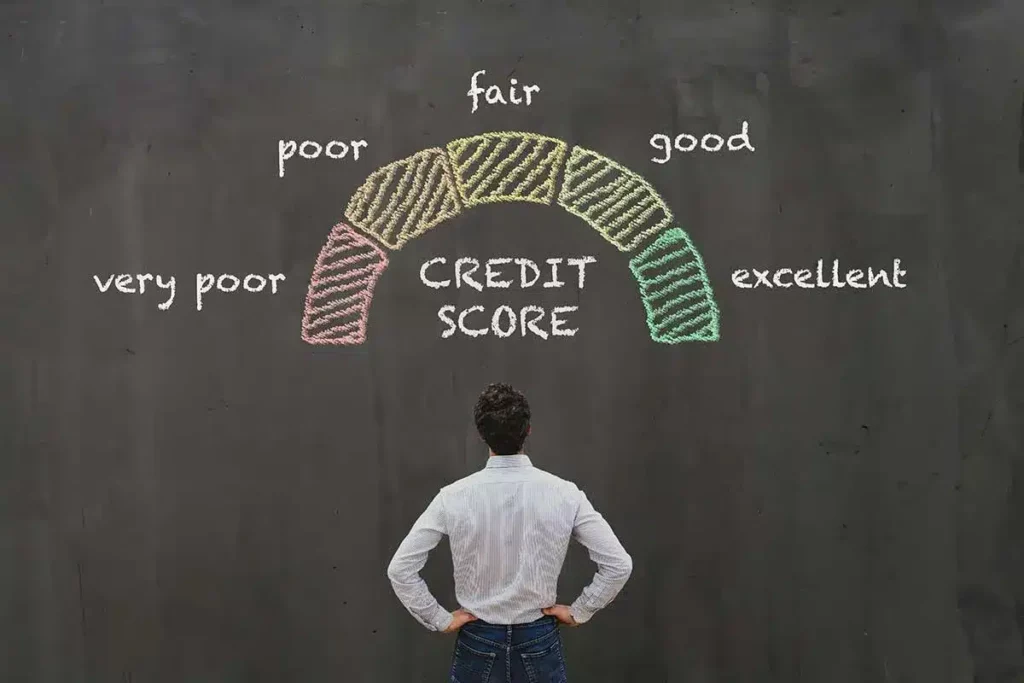A 673 credit score is considered a “good,” but not great, FICO score. It falls within the range (660-739) that most lenders consider “good”. With this type of credit score, you should be eligible for most loans and lines of credit.
FICO scores range from 300-850 and are calculated based on factors like payment history, amounts owed, length of credit history, new credit applications and types of credit used. Generally speaking, those with a 673 FICO score have made their bills on time or only occasionally missed payments. They may also have balances close to their total available limits on some accounts. Individuals with 673 FICO scores usually have multiple open lines of credit such as installment loans and revolving accounts like credit cards.
Your 673 FICO score puts you in a favorable position when applying for credit. While it may not be the highest range available, it still demonstrates responsible financial management and gives lenders assurance that payments will be made timely. To further boost your score, focus on improving payment history and decreasing debt levels. With such a low starting point as 673, taking these steps now could help enhance your overall financial picture and enable future access to better loan terms.
How does a 673 credit score compare to the average?
A 673 credit score falls on the low end of what lenders consider “good.” According to FICO, the national average credit score in 2021 was 714, meaning your score falls slightly below this figure. While 673 may not be at its highest possible point, it still conveys to lenders that you understand the significance of responsible credit management.
Overall, a 673 credit score is good, but it can be further enhanced by managing accounts responsibly and decreasing debt levels. Doing this will enable you to qualify for better loan terms in the future and give lenders even greater assurance that you are capable of managing finances well.

How are FICO scores calculated?
FICO scores are calculated based on five key components: payment history, amounts owed, length of credit history, new credit applications and types of credit used. Of these elements, payment history accounts for 35% of your score while amount owed accounts for 30%; length of time on file accounts for 15% while new applications make up 10% while types in use make up 10%.
What is payment history?
Payment history is the record of your payment behavior on credit accounts and it’s the single most influential factor affecting your FICO score. If you make timely payments and do not miss any, your score will typically be higher than if you make late or missed payments. The more recent the payment behavior, the larger its impact on your FICO score.
What is amounts owed?
Amounts owed are the total debt you owe on various credit accounts such as installment loans and revolving ones like credit cards. It’s essential to keep your total debt balances low in relation to available credit limits; doing so can have a beneficial effect on your FICO score, since it indicates responsible financial management.
What is length of credit history?
The length of a person’s credit history indicates how long their accounts have been open. Generally speaking, having more open accounts can improve one’s FICO score, as it shows you have demonstrated responsible management over an extended period.
What is new credit applications?
New credit applications refer to the number and type of new accounts you have recently opened. Opening too many accounts within a short period can negatively impact your FICO score, as it could indicate financial instability or difficulty managing multiple accounts.
What is types of credit used?
Types of credit refers to the combination of installment and revolving accounts you currently have open. Installment accounts, such as auto loans, student loans or mortgages, have fixed payments; on the other hand, revolving accounts are lines of credit like credit cards where balances may change from month to month. Having both types of accounts open can generally be seen by FICO score evaluators as more favorable.
Maintaining both types of credit is seen as a sign of financial stability and can help raise your FICO score. It’s essential to manage these accounts responsibly in order to sustain and boost your score.
By monitoring these five categories closely, you can improve your 673 FICO score over time. Paying bills on time, keeping balances low relative to total available limits and diversifying accounts are all essential steps in increasing your FICO score. Furthermore, taking advantage of any tools offered by lenders or other financial institutions may also assist in managing your 673 credit score. With diligent effort and sound financial management, you may enjoy better loan terms, lower interest rates on loans and more favorable credit lines in the future.
When considering your 673 FICO score, remember that this number is only a starting point. With responsible financial decisions and dedication to improving your credit, your 673 credit score can grow over time – providing greater opportunities when applying for loans or other forms of credit. Stay abreast of all five elements making up the FICO scoring system so you can take advantage of any emerging opportunities when they present themselves.
By staying aware of your 673 credit score, you can manage it and take steps to improve it over time. With a 673 FICO score, you are in an advantageous position compared to those with lower scores; with some careful management and dedication, you have the potential for rapid improvement in financial health. Taking proactive measures now will grant you better terms on future loans as well as preferential treatment from lenders later down the line.

Can I buy a house with a 673 credit score?
With a 673 credit score, it may still be possible to obtain a mortgage; however, certain loan types and interest rates may be higher than for those with excellent scores. Despite its shortcomings, 673 remains considered an adequate score and there are steps you can take in the future to improve it further.
Begin by paying off existing debt and ensure monthly payments are made on time. Also, diversify the types of accounts you have open – both installment and revolving – in order to demonstrate responsible financial management. Furthermore, limit how many new accounts you open within a short time as this could negatively affect your 673 FICO score in the long run.
Can I get a car loan with a 673 credit score?
With a 673 credit score, it may be possible to secure a car loan; however, your interest rates and loan terms may not be as favorable as those available to those with excellent credit scores. Therefore, when searching for the best rates on a new vehicle with your 673 score, be sure to shop around and compare offers from various dealers.
Additionally, pay off existing debt and ensure monthly payments are made on time to improve your 673 FICO score over time. Finally, limit the number of new accounts opened within a short time as this may negatively impact your 673 credit score. With diligence and dedication, you will be able to find an auto loan that fits within budget while helping boost your 673 FICO score.
What can I do with a 673 credit score?
A 673 FICO score is considered to be a fair credit score, though it may make it harder to qualify for some loans than those with excellent scores, there are still plenty of ways in which your 673 credit can work to your advantage.
Utilizing tools provided by lenders or financial institutions can help manage your 673 FICO score over time and even increase it. Furthermore, paying down existing debt and diversifying accounts open in order to show responsible financial management are all steps that you can take. With hard work and dedication, improving your 673 credit score over time and enjoying better loan terms in the future will become much easier with these steps taken.
With a 673 FICO score, you have the power to transform your financial health with some smart management and dedication. By taking proactive steps now, you can enjoy better terms on future loans as well as more favorable treatment from lenders in the future. With 673 credit score, you are in position to take advantage of great opportunities that would otherwise not be available if your score were lower. So don’t delay; start taking action today and responsibly manage your 673 credit score for even greater advantages in the future!


